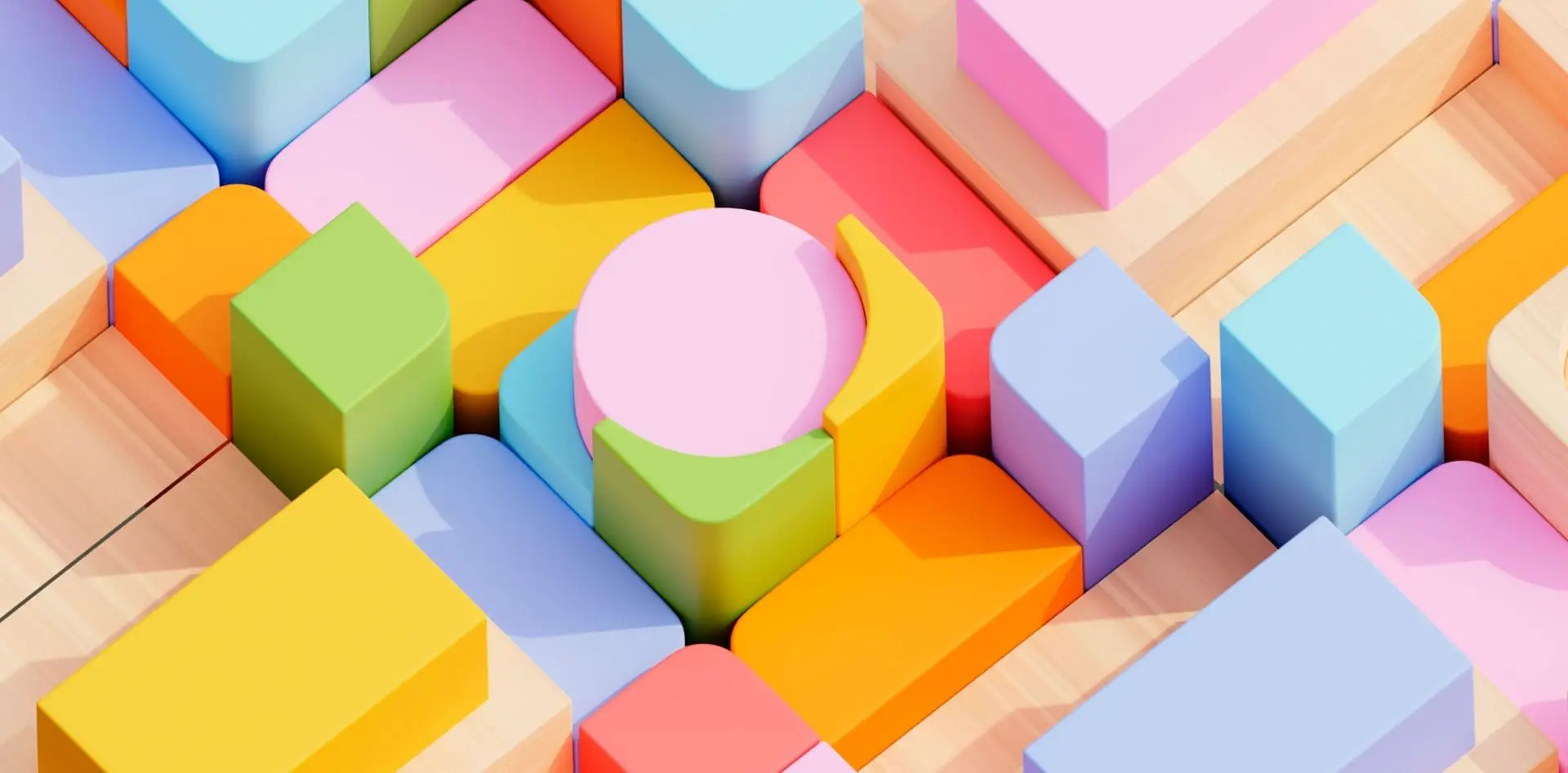Modern websites are constantly being updated to better align with new technology and user expectations. After a while, some websites begin to look like Frankenstein’s monster with so many ad hoc features tacked on that search engines treat them with disdain. They can say goodbye to achieving SEO goals.
If people can’t find your company online, how can they be expected to buy from you? SEO is essential for online success. Research shows that about 25% of customers will click on the top result of a search. If your site ranks lower than this, it’s highly unlikely people will make it onto your website.
Websites without good SEO are a bit like babies. They don’t understand language (no index pages), have few friends (no links) and lack authority (can’t do much to help your business). Google only starts to notice your website as it matures.
What Is an SEO?
SEO is the process of increasing website traffic through search engine results to put your website in front of potential customers. So, if you own a fitness website that offers tips and tricks for losing weight, a person searching “how to lose fat” will have a greater chance of finding your website if it uses good SEO techniques.
Google is key to good SEO. Google uses “crawler” bots (software that collects documents from the web to build a searchable index for the Google Search engine) to find the websites with the most relevance and authority on a topic. SEO-friendly websites make it easier for the crawlers to find, interpret and index your website. Additionally, rectifying broken links is crucial to ensure that your website remains accessible and optimized for both users and search engines.
Using tools like Google Search Console can help you track your SEO rankings and identify areas for improvement.
This article will help you prepare any website for SEO success.
Understanding Search Engines
Search engines are sophisticated software programs designed to search for and identify items in a database that match specific keywords or characters entered by the user. They play a crucial role in search engine optimization (SEO) by determining which websites appear in search results and in what order.
Search engines use complex algorithms to rank websites based on several factors, including relevance, authority, and user experience. The most popular search engines, such as Google, Bing, and Yahoo, continuously crawl the web to index web pages. This process involves collecting and storing data from websites, which is then retrieved and ranked based on its relevance to the user’s search query.
To improve search results, search engines employ various techniques, including natural language processing and machine learning. These technologies help search engines understand the context and intent behind search queries, ensuring that users receive the most accurate and useful information.
Understanding how search engines work is fundamental to optimizing your website for better visibility and higher rankings in search engine results.
Where to Start Optimizing Your Website?
Keyword Research and Planning
Keyword research is a critical component of search engine optimization (SEO) and pay-per-click (PPC) advertising. It involves identifying and selecting relevant keywords and phrases that people use to search for content online. By understanding what your target audience is searching for, you can tailor your content to meet their needs and improve your website’s visibility in search engine results.
Several tools are available to assist with keyword research, including Google Keyword Planner, Ahrefs, and SEMrush. These tools help you analyze search volume, competition, and relevance, allowing you to identify the best keywords to target. A well-planned keyword strategy can significantly enhance your search engine rankings and drive more traffic to your website.
When conducting keyword research, focus on finding a mix of short-tail and long-tail keywords that are relevant to your content. Short-tail keywords are broad and highly competitive, while long-tail keywords are more specific and often less competitive. By targeting a combination of both, you can attract a wider audience and improve your chances of ranking higher in search engine results.
Mobile First
You must respect the preferences of your visitors. To achieve this, your website must be accessible from any device – from a desktop computer to the smallest smartphone. Mobile-friendliness is a requirement, not a luxury.
More people than ever are accessing the internet with smartphones. In 2023, 56.86% of all internet traffic came from mobile devices – and this number will only continue to rise. What’s more, Google considers mobile compatibility as one of its top search engine ranking elements. For that reason, optimizing your website for mobile devices is essential. Incorporating mobile optimization into your overall SEO strategy is essential for achieving better search engine rankings and user engagement.
If your website includes a check-out section for purchasing, the process should be simplified for mobile users. After all, people won’t be as patient when shopping with a smartphone as they would be when using a desktop.
Another good SEO trick is to reduce the total number of fields in any form and to make it easier for users to use visual calendars to pick dates instead of forcing them to scroll through a list of numbers. It’s also a great idea to allow website visitors to make a purchase without having to create an actual account.
Mobile screens are smaller than desktops and they operate on slower networks, so simplicity and clarity is key. It’s smart to only display the most essential content and ensure your website doesn’t have intrusive pop-ups or unintuitive scrolling. A well-structured page layout allows mobile users to view all content with ease.

As far as forms and SEO go, clear and concise is the way forward. We prepared these mobile-friendly application forms for a Swedish cross-border recruitment platform called Lingocruit. Using just a few input fields makes filling out an application easier and much more SEO-friendly.

Page Speed
Page speed is crucial for both SEO and securing sales conversions. Let’s face it, when was the last time you waited more than 10 seconds for a website to load? Probably never, right? You’ll click the “back” button or go somewhere else if a website takes more than a few seconds to load. You’ll also give up on filling out a form if it’s too slow to load. For the business, a slow site can mean a lost sale.
In terms of SEO, page speed has been used by Google as a ranking indicator since 2018. Websites that load quicker also perform better on other business metrics. For example, research from Strange Loop showed that a 100 millisecond decrease in website load time increased conversions by 8.4%.
Search engines typically prioritize site and page content that loads quickly, as it enhances user experience and improves search engine rankings.
Millennials prefer shopping online. A study showed that over 40% of millennial visitors will leave if the site takes more than three seconds to load. You don’t want to lose these conversions due to non-responsive web design.
Read also: Understanding Website Speed and Its Importance in E-Commerce
A slow site will also spook Google’s crawlers. Even if Google can find and index your pages, a slow load time will convince the search engine that your website isn’t likely to provide a great user experience. As a result, Google could remove your site from the search results entirely, or at least demote it to the dreaded “page 2.”
Site speed can be affected by too many HTTP requests, large JavaScript and CSS files, and large images that need to be loaded. So, try to get rid of any heavy website elements and only keep the widgets that you and your customers will use regularly. You can also compress pictures and videos to speed up your page load times. In another blog post, we’ve detailed how and why you should optimize images for the web.
Content Optimization
Before you post anything on your website, ask yourself: will it educate, attract or delight your customers? If the answer is no, reframe the content until your website can catch its users’ attention. Although this article is about SEO, it is always important to write first for your visitors, then for search engines:
Titles
Make sure to come up with attractive, yet descriptive page and subpage titles. Alternatively use catchy captions to grab people’s attention. The way your website appears in Google Search results, including title links and snippets, can significantly impact user engagement and click-through rates.
Keywords
Focus on useful and relevant information that will help people find your site. You can combine keywords and use different forms of keywords, rather than trying to add as many as possible. Google doesn’t appreciate keyword stuffing.
Topics
Each page should cover a unique topic. It will only cause confusion if more than one page has the exact same product or intent. It can also lead to two pages competing for the same keywords.
Quality
Be original and purposeful. After all, visitors are searching for a solution to their problem. Learn what Google considers high-quality content and how to make it on your website.
Freshness
Add new content regularly. Some good options include starting a blog, encouraging people to share information and writing whitepapers or short e-books that people can download.
Length
The average website should contain no more than 500 words. But the ideal length for a blog post is about 1600 words because it sends Google a signal that people are likely to spend more time on your site. This will put your site higher in search results.
While you should always write engaging content, don't forget to include important information. Your website should clearly outline what the company does, its contact details, value proposition, a description of its products (including specifications, colors, shipping and return policies, or case studies if you offer services) and testimonials or reviews about your products and services.
Read also: 10 E-Commerce Mistakes That Are Killing Your Conversion Rate
Another important factor to remember is the site’s meta description. This is the short synopsis of your company that people will see in search results under the URL of your website. While meta descriptions don't impact SEO, they could end up being what convinces searchers to visit your site.
Your meta descriptions should not exceed 155-160 characters. To give search engines and readers a clear understanding of your offerings, make sure to include keywords in your title tags as well.

The user's eyes are naturally drawn to the bigger titles, then they move down to the smaller text. This sort of content hierarchy is not only good for readability and successful delivery of information, but it's also a recommended practice when it comes to implementing good SEO.

Internal Linking
Internal linking will increase traffic and build trust. In simple terms, internal links connect one page to another within a website. A consistent and robust internal linking system can help your site rank higher in searches for certain keywords and help direct Google to present only the most important pages.
Using tools like Google Search Console can help you monitor and improve your internal linking structures, ensuring that your website is easily navigable for both users and search engines.
Google interprets links from high-quality sites as signals of credibility. Your pages will rise in the rankings if you have a strong backlink profile. Building quality backlinks requires effort, but you will see results quickly if it’s done right.
Your website’s structure can also be reflected in permalinks. A permalink, as the name implies, is permanent. It is not recommended to use dates or information that could change.
Let’s suppose you are writing a blog on “Top 5 Marketing Tips for 2020”. While this is a fantastic topic, you should leave out “2020” in your permalink. This will allow you to update the article for 2021. It’s a great rule to keep in mind that also applies to pages dedicated to holidays that happen every year.
Permalinks shouldn’t be too long, but they should clearly explain what the website is all about and contain clear, meaningful keywords. If you own an online bookstore, for example, organize your pages using the permalinks to make it easy for search engines to understand the context.
Try to link any new post or content to one that you’ve already written. This will improve the user experience by keeping people on your site for longer. It also helps bots index and contextualize your websites.
Footer links aren’t a major SEO factor. They can, however, improve your website’s ranking by providing a better user experience. Footer links allow people to discover relevant content and learn more about your company.
People-Friendly SEO
In the heat of optimizing your website, never forget that its target audience will always be humans rather than search engine bots. Overzealous keyword implementation or unintelligible copy will drive people away. So, after every major SEO-oriented change, remember to always check your website’s readability: ask a friend to browse and read-through your website, or have a go at it yourself.
While there are no strict rules when it comes to what passes as an outright human-friendly or a bot-friendly SEO, best practice is to avoid needless repetitions, irrelevant tags, and overly long pieces of text which don’t answer the question.
The practice of implementing a more human-like approach to SEO is future-proof, and it will likely become a necessity in the future. Changes in the way Google crawler bots operate that were implemented in 2022 suggest an incoming Internet-wide turn towards more trustworthy, coherent, and human-friendly content.
Read also: SEO Maintenance – What Is It and Why Is It Important?
Building Authority
Building authority is essential for establishing your website as a trusted and credible source of information. Search engines measure authority using various metrics, including backlinks, social signals, and content quality. The more authoritative your website appears, the higher it will rank in search engine results.
Creating high-quality, relevant, and informative content is the foundation of building authority. Content that attracts links and shares from other reputable websites signals to search engines that your site is a valuable resource. Guest blogging, influencer outreach, and content marketing are effective strategies for building authority and increasing your website’s visibility.
Additionally, focus on earning backlinks from high-quality sites, as these are strong indicators of credibility. Engaging with your audience on social media and encouraging them to share your content can also boost your authority and improve your search engine rankings.

Local SEO and Tracking
Local SEO is the process of optimizing your website to rank higher in local search results. This is particularly important for businesses with physical locations, as it helps attract local customers who are searching for products or services in their area.
To optimize for local SEO, focus on incorporating local keywords into your website content, meta tags, and online directories. Google My Business is a valuable tool that allows businesses to manage their online presence and improve their local SEO. By providing accurate and up-to-date information about your business, you can enhance your visibility in local search results.
Tracking your local SEO performance involves monitoring website traffic, search engine rankings, and online reviews. Regularly reviewing these metrics can help you identify areas for improvement and adjust your strategy accordingly. Effective local SEO can lead to higher search engine rankings and increased foot traffic to your physical locations.
Security and Trust
Security and trust are fundamental to building a successful online presence. Ensuring that your website is secure not only protects your users’ data but also enhances your credibility and trustworthiness.
HTTPS (Hypertext Transfer Protocol Secure) is a secure protocol that encrypts data between your website and its users. Implementing HTTPS is essential for protecting sensitive information and is also a ranking factor for search engines. SSL (Secure Sockets Layer) certificates are used to establish a secure connection, and displaying trust badges, such as SSL certificates and security seals, can further improve your website’s trust and credibility.
Regular website updates and maintenance are crucial for maintaining security and trust. Keeping your website up-to-date with the latest security patches and features helps protect against vulnerabilities and ensures a safe browsing experience for your users. By prioritizing security and trust, you can build a strong online reputation and improve your search engine rankings.
SEO Should Be Among Your Top Priorities
Finally, one final golden rule. A good strategy for SEO should be one of the first considerations before starting a website, as it is immensely better to implement a consistent and thought-through strategy rather than fix a website after its launch. A comprehensive SEO strategy that includes both foundational practices and advanced techniques is essential for effective search engine optimization.
Hopefully this checklist will help you save valuable time and resources and allow you to experience the beauty and benefits of good SEO. It will save you a lot of time and headaches when it comes to web development, content formatting, design, URL structures, and other related tasks.
We offer a simple and effective way to create digital products that you will fall in love with.
In our pursuit of creating inclusive web designs, our expertise spans various industries such as e-commerce, fintech, retail, SaaS, education, and more. We pride ourselves on maintaining transparency throughout our creative and development processes, ensuring that your specific needs are always met. Rest assured that we prioritize the stability of your website, guaranteeing that it will never go offline. Furthermore, we provide expert guidance on the necessary steps you need to take to make your website a resounding success.
Contact us today, and let's start building your new digital presence!








